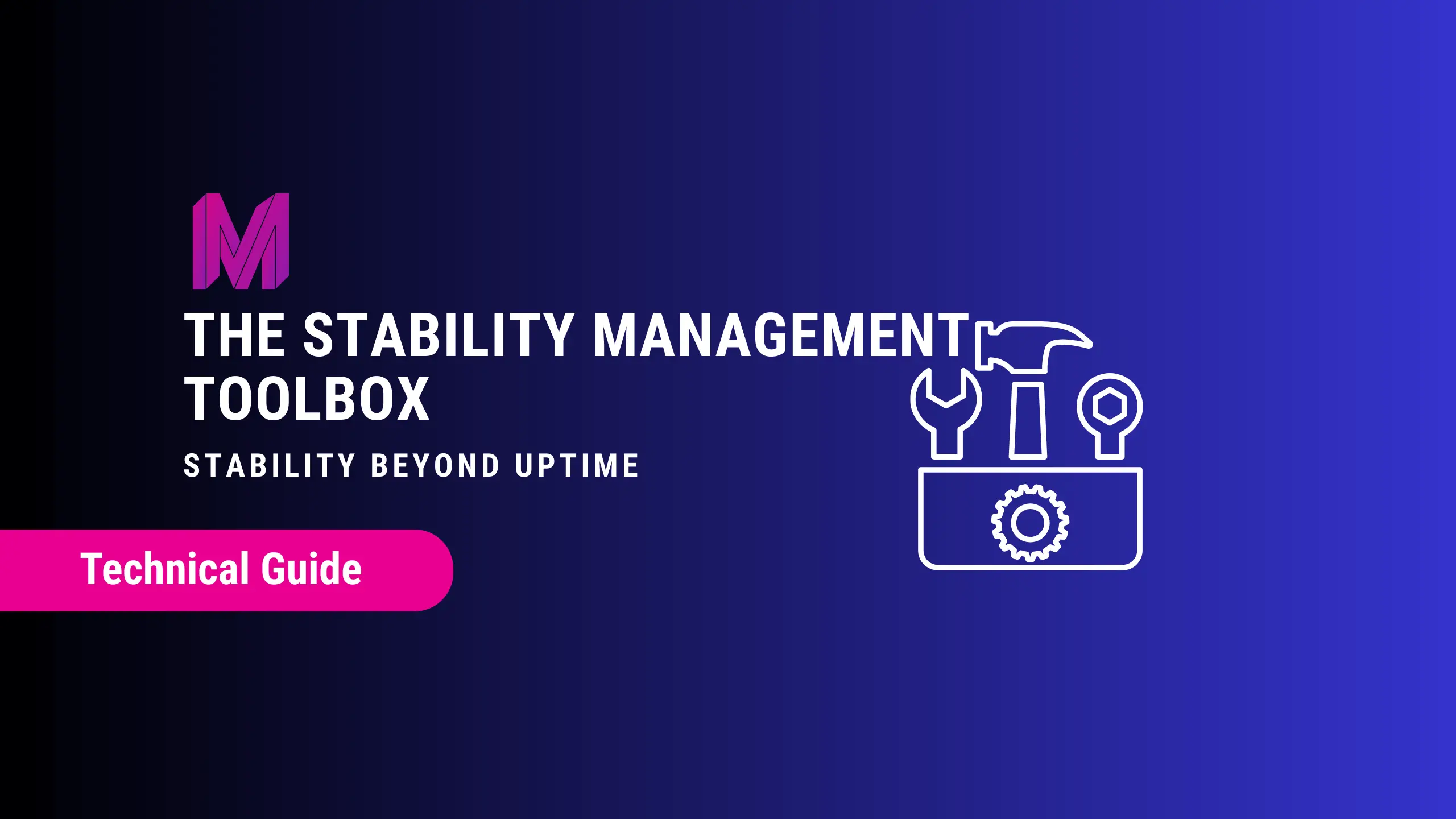
The Stability Management Toolbox: Engineering for Reliability at Scale
In the fast-paced world of startups, system failures often arise not from flawed code but from infrastructure that can't keep up with rapid business growth.
These failures lead to more than just downtime—they result in lost revenue, diminished customer trust, and a shift in focus from innovation to crisis management.
True stability ensures that services remain available and responsive, even during peak loads. This encompasses the reliability of background jobs, APIs, and all underlying components that contribute to customer-facing services during critical moments.
While monolithic architectures may function adequately in development environments, production demands resilience, scalability, and comprehensive visibility.
Stability engineering is the discipline dedicated to constructing systems that maintain operational integrity, observability, and self-correction capabilities, even when confronted with unexpected demands or failure conditions.
Key components include:
Service-Level Redundancy: Implementing duplicate systems to prevent single points of failure.
Autoscaling: Automatically adjusting resources, including data layers, to meet demand.
Observability: Utilizing logs, metrics, and traces to monitor system health.
Load Testing and Chaos Engineering: Simulating stress conditions to identify weaknesses.
Resource Configuration and Recovery: Ensuring systems can recover gracefully from failures.
By adopting stability engineering practices, organizations move from reactive guesswork to proactive assurance that their infrastructure can withstand varying loads and conditions.
Startups experiencing rapid growth often encounter several stability challenges:
Monolithic Architectures Without Autoscaling: Rigid systems that can't adapt to increased demand.
Tightly Coupled Services: Interdependent services that hinder scalability and fault isolation.
Blocked Pipelines: Inefficient resource configurations leading to bottlenecks.
Storage Misuse: Improper handling of stateful components causing latency.
Complex Dependencies: Entangled systems that complicate upgrades and maintenance.
These issues often arise from initial designs optimized for simplicity rather than scalability, leading to performance degradation as traffic increases.
An effective stability toolbox comprises both technological tools and strategic mindsets:
Technological Tools
Stateless Services: Designing services that don't retain state between requests, facilitating scalability.
Autoscaling Groups: Utilizing platforms like EKS and RDS to automatically adjust resources.
Load Balancers and Service Meshes: Distributing traffic efficiently and managing service-to-service communication.
Tuned Infrastructure Components: Setting appropriate CPU/memory limits and health probes.
Comprehensive Observability Tools: Implementing distributed tracing, logging, metrics, and Application Performance Monitoring (APM).
Strategic Mindsets
Anticipate Failures: Design systems with the expectation of crashes and plan for recovery.
Implement Health Checks and Observability: Ensure systems can communicate their status effectively.
Regular Performance Testing: Conduct spike and load tests to assess system robustness.
Prioritize Self-Healing Mechanisms: Automate recovery processes to minimize manual intervention.
Observability should be viewed not merely as a dashboard but as a critical communication channel for systems under stress.
Experienced teams evaluate system stability through several criteria:
Redundancy in Critical Components: Ensuring no single point of failure exists.
Load and Spike Testing: Simulating traffic increases of at least 25% over expected peaks.
Chaos Experiments: Deliberately introducing failures to test system resilience.
Testing Scale-Up and Graceful Shutdowns: Validating that systems can handle scaling events smoothly.
Optimized Autoscaling Configurations: Setting thresholds that balance performance and cost.
External Health Checks: Monitoring systems from the client's perspective.
Full Observability: Maintaining the ability to detect, alert, and debug issues promptly.
Many teams encounter preventable issues that compromise stability:
Lack of Containerization: Manual environments prone to inconsistencies and failures.
Missing Resource Limits/Requests: Unbounded resource usage leading to instability.
Absence of Health Checks: Inability to detect and respond to service failures promptly.
Neglecting Worst-Case Scenario Testing: Unpreparedness for unexpected stress conditions.
Reliance on Default Configurations: Failure to tailor settings to specific workloads.
No Centralized Logging or Tracing: Difficulty in diagnosing and resolving issues.
Visibility into system failures is crucial; discovering issues only after they impact customers is too late.
A rapidly growing team developed a Python-based LLM management service using FastAPI, Redis, Weaviate, and Celery, all within a single container. This architecture led to blocking workers and resource contention, affecting chat interactions.
The solution involved decoupling workloads, containerizing components, implementing metrics, and tuning concurrency settings. This stability-focused refactor restored both trust and performance.
Investing in stability engineering yields significant advantages:
Reduced Firefighting: Minimizing time spent on emergency fixes.
Enhanced Customer Trust: Delivering consistent and reliable services.
Cost-Effective Infrastructure: Optimizing resource usage through right-sizing and autoscaling.
Accelerated Release Cycles: Enabling faster deployment of new features.
Confidence During Growth: Ensuring systems can handle increased demand or migrations.
Stability engineering is not merely an operational concern; it's a strategic enabler for business growth.
Adopting the following habits can significantly enhance system stability:
Design Stateless Services: Avoid storing state in application memory to facilitate scalability.
Deploy Multiple Replicas: Ensure high availability by running at least two instances of each service.
Plan for Service Failures: Design systems that can handle crashes or disappearances gracefully.
Set Resource Requests and Limits: Define resource boundaries for all workloads to prevent overconsumption.
Implement Health Checks and Observability Tools: Monitor system health and performance proactively.
Educate Teams on Monitoring Tools: Train staff to interpret dashboards and investigate bottlenecks effectively.
Treat observability as a fundamental aspect of your system architecture. Encourage your team to embrace it fully, as neglecting observability can lead to significant challenges during high-pressure situations.
Engineering for reliability is not about overcomplicating systems; it's about building robust infrastructures that support sustainable growth.
Start implementing stability engineering practices today to ensure your systems can scale effectively and reliably.